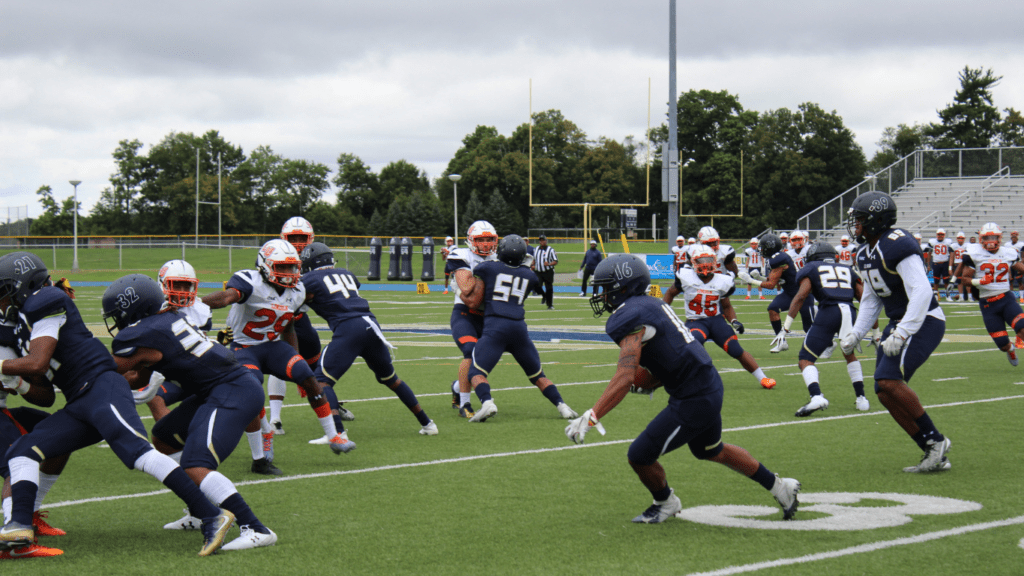Research and Preparation
Winning a fantasy sports league starts with thorough research and meticulous preparation. It’s important to know the player stats and team dynamics.
Know the Player Stats
Analyzing player stats helps in identifying trends. For instance, a running back’s average yards per game or a pitcher’s ERA provides insights into their potential performance. It’s beneficial to review at least the past three seasons of data for key players.
Understand Team Dynamics
Team dynamics influence individual performances. For example, understanding how a quarterback’s new offensive line might affect passing efficiency can inform your draft choices. Track trades and acquisitions that can change a player’s role within the team.
Review Expert Rankings
Many fantasy sports platforms and websites offer expert rankings. Sources like ESPN and Yahoo provide updated player rankings along with commentary. Reviewing these helps in making informed decisions during drafts and trades.
Assess Injury Reports
Stay updated on injury reports. An injury to a star player can drastically change team dynamics. Platforms like Rotoworld and CBS Sports offer real-time injury updates. Regularly checking these sources helps avoid drafting injured or at-risk players.
Monitor Player News
Player news impacts their stock. News on a player’s off-field behavior, contractual issues, or changes in coaching staff can affect performance. Setting up alerts on platforms like Twitter and following reputable sports news sites ensures you stay informed.
Practice Mock Drafts
Participating in mock drafts builds strategy. FantasyPros and Sleeper offer mock draft tools that simulate real draft experiences. Practicing multiple scenarios prepares you for draft day, enabling quick and confident decisions.
Incorporate these research and preparation strategies to lay a solid foundation for your fantasy sports league success.
Drafting Strategies
Drafting well lays the groundwork for fantasy sports league success. Let’s explore key tactics to improve draft outcomes.
Understanding Player Value

Knowing player value enhances decision-making during drafts. Use Average Draft Position (ADP) data and expert rankings to gauge value. ADP indicates where players are typically picked, helping avoid overreaching. For example, if a player’s ADP is 50, but you draft them at 30, it’s likely an overreach unless other data supports the choice.
Importance of Positional Scarcity
- Positional scarcity impacts draft success.
- Certain positions have fewer elite players, making top options more valuable.
- In football, elite running backs are scarce compared to wide receivers.
- Prioritize these scarce positions early if you want a competitive edge.
- Drafting an elite running back in the first round often pays off more than a wide receiver or quarterback.
Balancing Risk and Reward
Balancing risk and reward is crucial during drafts. High-risk players have greater potential but can also bust. Diversify picks to mitigate risk, combining safe bets with high-upside choices.
For instance, pairing a dependable veteran with a promising rookie balances stability and potential. Always assess injury history and team changes when gauging risk, as these factors heavily influence player performance.
By refining these strategies, a strong fantasy sports draft can dramatically improve league performance.
In-Season Management
Maintaining a competitive edge throughout the season requires constant attention to your roster and active decision-making.
Effective Waiver Wire Moves
Monitoring the waiver wire lets you spot emerging talent or capitalize on injuries impacting other teams. Checking player performance weekly helps identify breakouts and potential pickups. Prioritize players with increased playing time due to injuries; for instance, backups who become starters. Evaluate the best available options by analyzing recent performance trends and upcoming matchups.
Trade Strategies
Trading can significantly enhance team strength. Evaluate your roster to spot weaknesses and leverage excess depth in certain positions. Target players with favorable schedules or those in underperforming teams that might improve. Don’t hesitate to send trade offers but be realistic about value. Use trade calculators or expert rankings to assess fair value and structure mutually beneficial trades.
Injury Management and Bench Depth
Managing injuries effectively prevents roster disruption. Regularly review injury reports to stay updated on player conditions. Maintain bench depth by holding versatile players who can fill multiple roles. Acquiring handcuffs for key starters also provides insurance against unforeseen injuries. Adjust your lineup promptly to ensure active players replace injured ones.
Understanding Scoring Systems
Understanding scoring systems is crucial for building a winning fantasy sports team. Different leagues use various scoring methods, which significantly impact player value and strategy.
Points Per Reception (PPR) Leagues
PPR leagues award points for each reception, making wide receivers, tight ends, and some running backs more valuable. In these leagues, I focus on players known for their high reception totals.
For example, drafting players like Christian McCaffrey or DeAndre Hopkins early can give a significant advantage. Prioritize pass-catching backs and target-heavy receivers to maximize points.
Standard and Half-Point Leagues
Standard leagues don’t award points for receptions, emphasizing touchdowns and yardage. Here, I focus on consistent scorers and players with high touchdown potential.
For example, drafting Derrick Henry or Nick Chubb early ensures a strong start. In half-point leagues, receptions matter but less so. Balancing yardage, touchdowns, and receptions becomes vital. I often target balanced players who contribute effectively in all areas, maximizing overall points.
Utilizing Analytical Tools
Using analytical tools in fantasy sports can significantly enhance your decision-making. These tools provide insights that are crucial for gaining a competitive edge in your league.
Projections and Rankings
Projections give a predictive look at player performance. They help identify potential breakout players and avoid those with declining trends. Analyzing weekly projections is essential for setting your optimal lineup. Rankings consolidate expert opinions, offering a quick overview of player value. I recommend using platforms like FantasyPros, which aggregate rankings from multiple sources for a comprehensive view.
Advanced Statistics
Advanced statistics delve deeper into player performance. Metrics like:
- yards per route run
- target share
- air yards
give a clearer picture than traditional stats. For example, yards per route run highlights a wide receiver’s efficiency, while target share shows their involvement in the offense. Utilizing these metrics can uncover undervalued players on the waiver wire or in trades. Websites like Pro Football Focus and Rotowire offer detailed advanced statistics that can refine your strategies.




